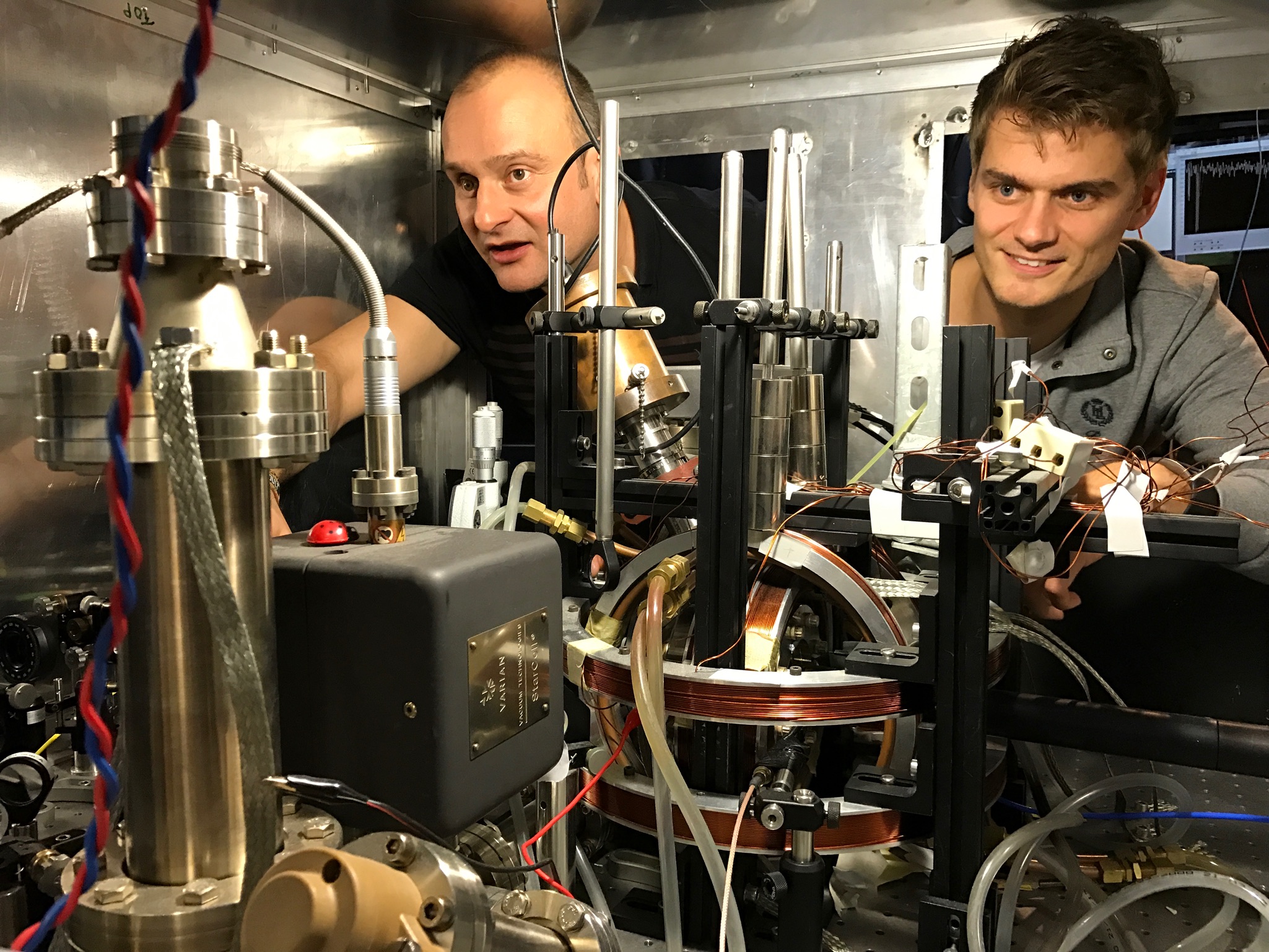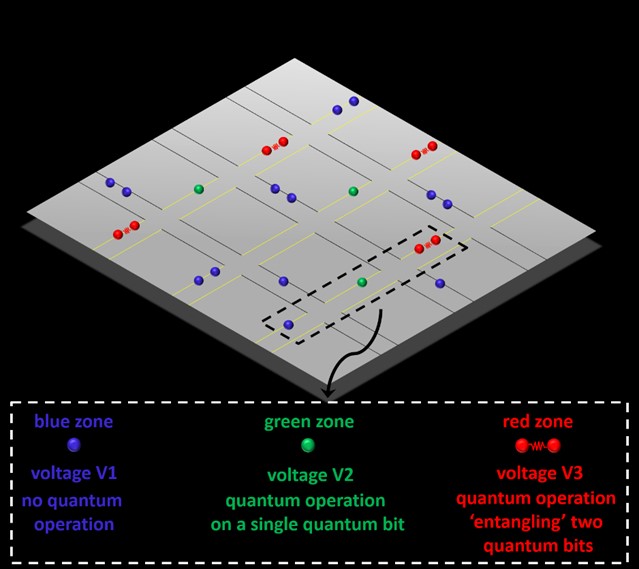Construction of practical quantum computers radically simplified
NQIT researchers at the University of Sussex have proposed an exciting new architecture for scalable ion trap quantum computing that could radically simplify the engineering challenge of building a large-scale quantum computer.
Quantum computers could solve certain problems - that would take the fastest supercomputer millions of years to calculate - in just a few milliseconds. They have the potential to create new materials and medicines, as well as solve long-standing scientific and financial problems. Universal quantum computers can be built in principle - but the technology challenges are tremendous, perhaps more difficult than manned space travel to Mars.
In a new paper published in Physical Review Letters, Dr Seb Weidt and Professor Winfried Hensinger and colleagues from the Ion Quantum Technology Group, present a fundamentally different approach for trapped-ion quantum computing that uses voltages and microwave fields to control the ions, rather than lasers. This new design is based on individually-controlled voltages applied to each logic gate location, analogous to a traditional transistor architecture within a classical computer processor. When implemented, it would allow a substantial reduction in the number of laser beams required and a simplification of the design of the “chip” used to hold the trapped-ion qubits.
As a first step towards this concept, they have demonstrated a versatile quantum gate based on a far-field microwave ion trap, with an impressively high fidelity of 98.5%. This is more than an order of magnitude improvement compared with the previous demonstration using this method and very close to the 99% required for fault-tolerant quantum computing.
This new proposed architecture, along with the far-field microwave ion trap result, puts the construction of large-scale quantum computers within reach of current technology.
- Journal article: “Trapped-ion quantum logic with global radiation fields”, by S. Weidt, J. Randall, S. C. Webster, K. Lake, A. E. Webb, I. Cohen, T. Navickas, B. Lekitsch, A. Retzker, and W. K. Hensinger (Phys. Rev. Lett. 117, 220501 (2016))
- University of Sussex press release: Construction of practical quantum computers radically simplified
- University of Sussex interview with Prof. Winfried Hensinger: People said this was impossible. I thought, I’ll show you
- More about microwave ion trap technology
Press coverage:
- Construction of practical quantum computers radically simplified Phys.org
- A Quantum Computing Breakthrough? Scientists Invent Groundbreaking Method To Simplify Construction Of Quantum Computers Tech Times
- Quantum computing without millions of lasers Electronics Weekly
- Quantum computing breakthrough: UK scientists develop technique to greatly simplify trapped ions International Business Times
- BBC coverage:

